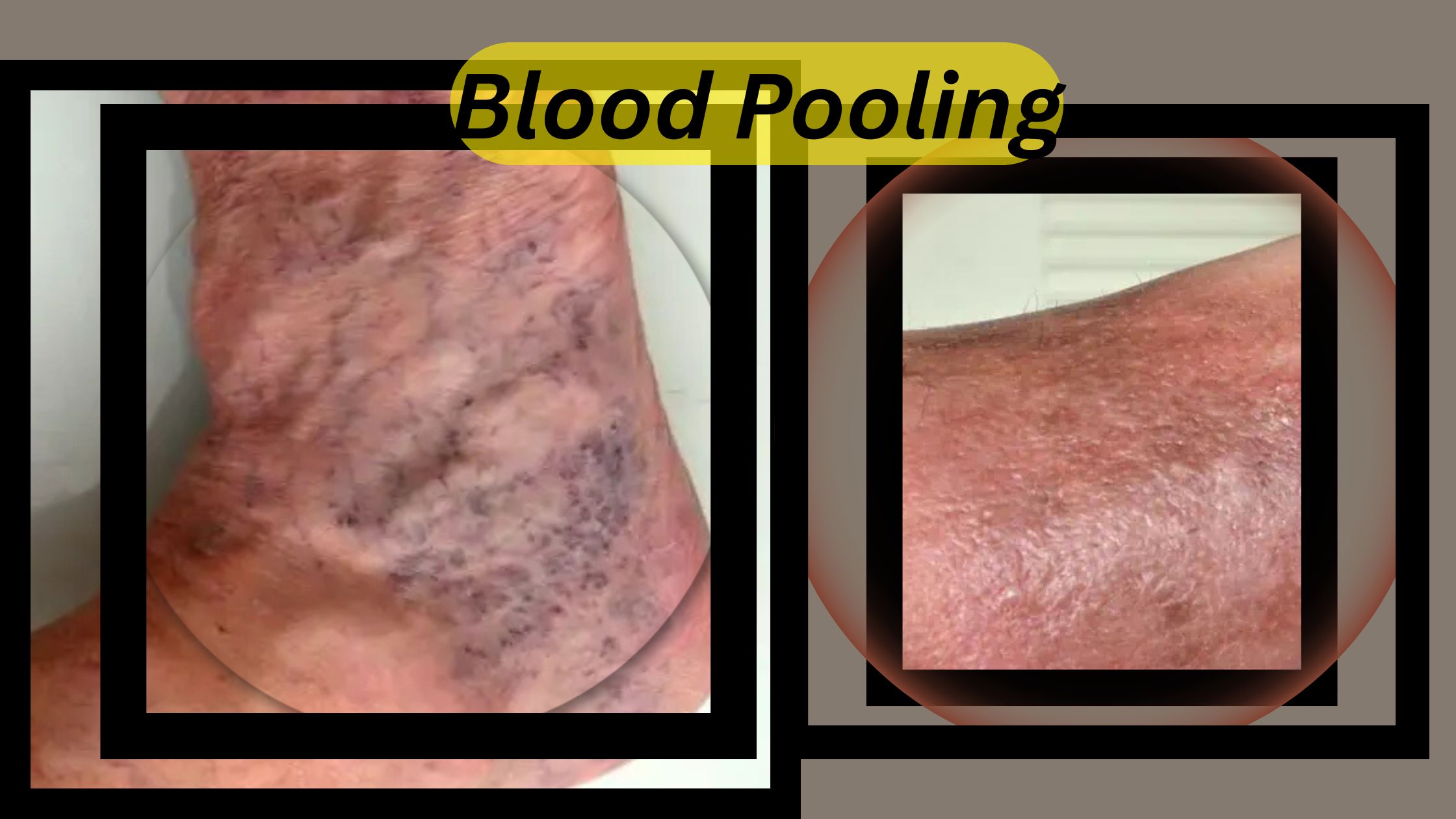Blood pooling, also known as venous pooling or venous stasis, occurs when blood collects in the veins, usually in the legs, instead of efficiently circulating back to the heart. While temporary discomfort in mild cases may occur, severe or long-term blood pooling can lead to serious health complications.
In this article, we’ll explore:
- Causes behind the blood pooling
- Common symptoms to watch for
- Potential dangers of untreated blood pooling
- Effective prevention and treatment options
By the end you will have a clear understanding whether or not depositing blood is dangerous or how to manage it effectively.
What Is Blood Pooling?
The pooling of blood is when the veins (especially in the legs) struggle to push the blood back to the heart. Generally, small valves in the veins and muscle contraction help to flow blood upwards. However, if these valves are weak or failed, blood may deposit, which may cause inflammation, heaviness and other symptoms.
Common Causes of Blood Pooling
Many factors contribute to blood pooling, including:
Prolonged Sitting or Standing
- Jobs that have to sit or stand for a long time (e.g., office staff, nurse, teacher) increase risk in them.
- The contraction of the muscles that help pump blood from immobility decreases.
Varicose Veins
- The damaged vein valves allow the blood to flow backwards and pool.
- The folded, emerged veins are its major signs.
Pregnancy
- Increased blood volume and hormonal changes reduce the veins walls.
- Increased uterus also puts pressure on the pelvic veins.
Obesity
- Overweight pressure on the veins and blood communication decreases.
Aging
- Over time, veins lose their elasticity, reducing their functionality.
Deep Vein Thrombosis (DVT)
- Blood clot in deep veins can cause blood flow to be blocked, causing blood pooling.
Chronic Venous Insufficiency (CVI)
- A long-term condition in which the veins cannot send the blood back properly.
Symptoms of Blood Pooling
If you feel any of these symptoms, you may have pooled blood in your body:
- Swelling (Edema) – Especially in the ankles and feet.
- Heavy, Aching Legs – Worse after long periods of standing or sitting.
- Visible Varicose or Spider Veins – Blue or purple twisted veins.
- Skin Changes – Discoloration (red or brown patches), dryness, or itching.
- Leg Cramps – Especially at night.
- Slow-Healing Wounds – Due to poor circulation.
If left untreated, these symptoms can worsen and lead to complications.
Is Blood Pooling Dangerous? Potential Risks
Although sometimes mild blood deposit is not harmful, chronic blood pooling can cause serious health problems, including:
Deep Vein Thrombosis (DVT) – A Silent Killer
- When blood pools for a very long time, it can form clots in deep veins.
- If a clot breaks, it can reach the lungs PE (pulmonary embolism), which is a threat to life.
Warning Signs of DVT:
- Sudden leg pain or tenderness
- heat and redness in one leg
- Swelling that doesn’t improve with leg elevation
Venous Stasis Ulcers
- Wounds do not heal due to poor blood circulation, leaving open sores (usually near ankles).
- These ulcers are painful, they are more likely to have infection and they are gradually fine.
Chronic Venous Insufficiency (CVI)
- For long time, the blood pooling damages the veins, causing permanent blood circulation problems.
- Over time the symptoms get worse, which makes the skin thick, becomes ulcers and infections.
Lipodermatosclerosis (Hardening of Skin & Tissues)
- Due to long-term inflammation the skin around the calves becomes harden and black.
- This situation is very painful and cannot be fine by going forward (advanced stages).
Increased Risk of Infections
- Bad blood flow weakens the immune reaction to the legs, which increases the likelihood of infection.
How to Prevent and Treat Blood Pooling
The good news? Blood pooling can often be managed with lifestyle changes and medical treatments.
Lifestyle Changes to Improve Circulation
- Move Regularly – Take short walks, stretch, or flex your feet if sitting/standing for long.
- Elevate Your Legs – Raise legs above heart level for 15-30 minutes daily.
- Wear Compression Stockings – Graduated compression socks help veins push blood upward.
- Stay Hydrated – Proper hydration improves blood flow.
- Exercise Regularly – Walking, cycling, and swimming strengthen calf muscles.
- Maintain a Healthy Weight – Reduces pressure on veins.
- Avoid Tight Clothing – Tight pants or belts can restrict circulation.
Medical Treatments for Severe Cases
- Sclerotherapy – Injects a solution to close off spider or varicose veins.
- Endovenous Laser Therapy (EVLT) – Uses laser heat to seal faulty veins.
- Vein Stripping – Surgical removal of damaged veins (rarely needed today).
- Medications – Blood thinners for DVT or diuretics for swelling.
When to See a Doctor
Seek medical attention if you experience:
- Sudden, severe leg swelling or pain (possible DVT).
- Non-healing wounds or ulcers.
- Skin discoloration or hardening.
- Persistent swelling despite home remedies.
Key Takeaways:
- Early intervention prevents complications.
- Exercise, compression stockings, and leg elevation help significantly.
- If symptoms worsen, consult a vein specialist.
Final Verdict
Sometimes light blood pooling occurs not usually dangerous and it can be controlled by making some simple changes in lifestyle. However, chronic or severe venous pooling can cause life-threatening complications such as DVT, ulcers and infection. By taking active steps, you can improve blood circulation and reduce the risks associated with blood pooling.
